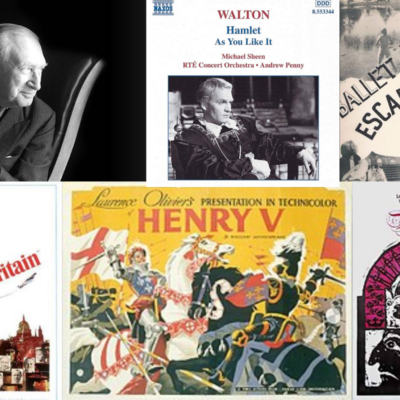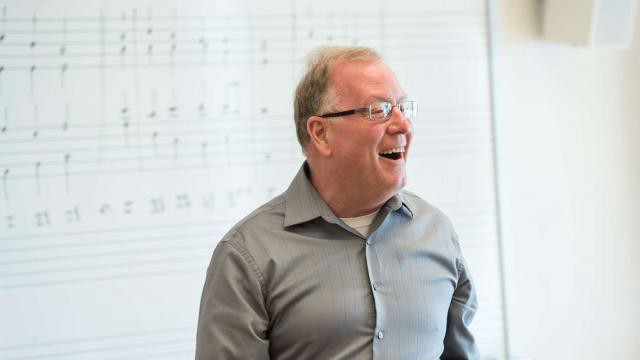
Edward Elgar (1857–1934)
Introduction and Allegro, Op. 47 (1905)
Had Edward Elgar not been a musician, he just might have been a scientist or an inventor. Fascinated by technology, he was a keen amateur chemist who even patented a method to produce hydrogen sulfide. Thus it’s not surprising that he was an enthusiastic advocate of recording who gifted posterity with rich bounty of himself interpreting his own works on record—sometimes more than once as technology improved over the years.
He did not, however, leave us an Elgar-led Introduction and Allegro, Op. 47. That’s a pity, but understandable under the circumstances. The work had been considered a failure for some time after its 1905 premiere, and by the time its rehabilitation was well under way, the young John Barbirolli beat Elgar to the punch in a splendid 1928 premiere recording. (In a letter to Gramophone publisher Compton Mackenzie, Elgar was polite enough about Barbirolli’s interpretation, but one gets the distinct impression that he was writing with his teeth clenched.)
A skilled violinist, Elgar was the perfect composer for a work that channels the Baroque-era concerto grosso (small instrumental group countered by larger orchestra) while being indubitably music of its own time and place. It’s cast in one sustained movement that divides into three sections—a moderate-tempo Introduction that introduces the themes that will thread throughout, followed by the Allegro proper in which the themes are tossed around from group to group, the whole culminating in a majestic passage that ends the work in a blaze of optimism.
Grażyna Bacewicz (1909–1969)
Concerto for String Orchestra (1948)
Among life’s musical pleasures there are few as keen as first discovery, whether of a composer, or a performer, or a composition. Many people can well remember that initial encounter with, say, Tchaikovsky or Horowitz or the Beethoven Eroica; such experiences can foster a lifelong love for music, or perhaps rekindle a love that had been waning. That’s why our current interest in restoring the music of worthy but overlooked composers is such a blessing. We’re all making new friends.
That takes us to the 1930s and celebrated teacher Nadia Boulanger, whose studio was considered de rigueur for up-and-coming young musicians everywhere. That included Grażyna Bacewicz, an exceptionally talented triple-threat violinist, pianist, and composer, whose long-overlooked music has been coming into view of late, and it’s well worth exploring: beautifully crafted, vital and passionate, it carves out a stylistic journey from the Gallic influences of her youth to the dark complexities of her late years.
Bacewicz’s 1948 Concerto for String Orchestra takes its title from Béla Bartók’s magisterial 1943 Concerto for Orchestra, which highlights numerous orchestra players rather than focusing on a single soloist such as piano or violin. A few listening tips might help in absorbing what is likely to be an unfamiliar work. First, listen for the chugging, almost motor-like rhythms in the first movement—those are a Bacewicz trademark. Second, prepare for a second movement of exceptional beauty and expressiveness—it’s possibly her finest such achievement. Finally, consider the shadows that sometimes darken the joyous, dancelike third movement, and remember that Poland was just barely recovering from the horrors of World War II.
Gerald Finzi (1901–1956)
Eclogue for Strings (1927/1957)
It seems altogether fitting that Gerald Finzi loved apples and cats. Of the former, he cultivated almost every known English variety on the 16 acres surrounding his modest home in the south of England. Of the latter, he rarely had fewer than a half-dozen on tap at any given time. Thus the man, thus his music: the very embodiment of the English ‘pastoral’ style, a relaxed yet luminous musical idiom that attracted many of the native British composers of his era.
“If a foreigner new to England wished to taste the special flavour of English music,” wrote Arthur Bliss in 1956, shortly after Finzi’s death from complications of Hodgkins’ Disease, “he could do no better than study first the music of Gerald Finzi. Here he would come on music that exhales the very air of England.”
Finzi’s exquisitely peaceful Eclogue began in 1927 as the slow movement of a never-completed piano concerto; it acquired its title upon its 1957 publication. As befits an ‘eclogue’—a dialog between two shepherds—the piece sustains a rapt and tranquil mood throughout, unfolding almost like one of Bach’s slow arias, with the piano cast in the vocal part.
Antonín Dvořák (1841–1904)
Serenade for Strings in E Major, Op. 22 (1875)
Neurosis is something of a calling card for many Romantic composers. But not Antonín Dvořák. He wrote music that is blissfully, happily, and thankfully free of neurotic or depressive tendencies. That is not to say that his works are uniformly sunny or without psychological depth: quite the contrary. But amongst the great composers only Joseph Haydn can meet Antonín Dvořák on the same ground of psychological stability. Listening to Dvořák, like listening to Haydn, can be good for what ails you.
And the early Serenade for Strings in E, Op. 22 is a surefire tonic for troubled spirits. There isn’t a mean bone in its body. Dvořák was in a happy space when he wrote it. In 1875 and his wife had welcomed their first child—he was to prove a devoted family man—and significant recognition had come his way by way of a generous stipend from Vienna that allowed him to concentrate on a sheaf of works that include the radiant Symphony No. 5 in F Major and his first piano trio. It is said that he wrote the Serenade in 12 days, which seems altogether plausible. The piece flows forth in a stream of sustained inspiration, lyrically beguiling and, where appropriate, irresistably exuberant.
Serenades are amongst the more lighthearted members of the orchestral repertory. The idea here is to present musical ideas in a relatively relaxed manner, without the emphasis on development that is characteristic of larger-boned genres such as symphonies. Dvořák’s Serenade perfectly embodies that basic definition, with five movements that each, in their own way, breathe fresh air and bask in the sunshine. Even the ‘slow’ movement keeps angst firmly at bay, as Dvořák puts the emphasis on sweet lyricism rather than drama.
Program Annotator Scott Foglesong is the Chair of Musicianship and Music Theory at the San Francisco Conservatory of Music, and a Contributing Writer and Lecturer for the San Francisco Symphony. He also leads the California Symphony’s ground-breaking music education course for adults Fresh Look: The Symphony Exposed.
The California Symphony’s ALL THINGS STRINGS featuring pianist Elizabeth Dorman takes place Saturday, November 5 at 7:30 PM and Sunday, November 6 at 4 PM at the Lesher Center for the Arts. Tickets are $49 to $79. Buy tickets online or call or visit the Lesher Center Ticket Office at 925.943.7469, Wed – Sun, 12:00 noon to 6:00 pm.



